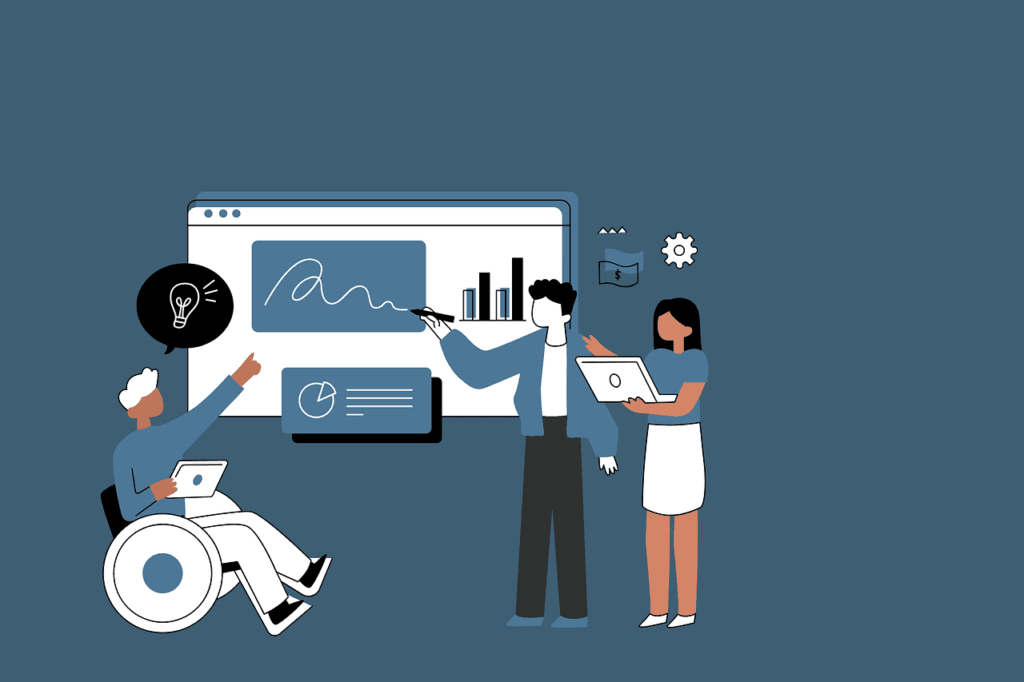Understanding Customer Feedback
Importance of Customer Feedback
Let’s chat about something close to my heart—customer feedback. It’s like a trusty old map guiding my business through the fog. It paints a picture of what’s working and what’s a bit wonky in my world from my customer’s eyes. Help Scout’s wisdom (find it here) tells me these nuggets of feedback gold are game-changers—they help jazz up the whole customer experience scene.
When folks talk about Customer Experience (CX), they’re really just adding up all the little chats and meetings customers have with my brand. These interactions weigh heavy on the “Will they come back? Will they tell their buddies?” scale. So, when I roll up my sleeves and dig into this feedback, it directly swings the customer satisfaction meter either up or down (CSAT for those stats-loving peeps).
| Feedback Type | What It’s About | Why It Matters |
|---|---|---|
| Positive Feedback | What’s grooving well. | Gives a thumbs up to what I’m doing right. |
| Constructive Criticism | Stuff that needs sprucing up. | Points me toward fixing the kinks. |
| Complaints | Red flags on what’s not cutting it. | Tells me what needs a quick fix. |
Being sharp about reading and reacting to this feedback makes my biz click with what the crowd expects. This attuned focus ain’t just good sense; it molds a business that’s super adaptable and hearty.
Empowering Positive Change
Now, what’s mind-blowing is how feedback—especially the not-so-pretty bits—can spark some darn positive change. If I’m brave enough to hug those critiques, I can flip them into pure magic that boosts customer happiness and ramps up loyalty.
Every piece of feedback gives me clues on where the customer experience could use some TLC. Once I act on it, it’s like greasing the wheel of the customer experience journey. For maximum bang from the feedback buck, sorting it logically and taking tangible actions after is key.
When I’m gearing up for feedback sessions, my checklist looks something like this:
- Spotting common feedback threads.
- Ranking issues by how often they pop up and how big they are.
- Making changes and keeping tabs on what those tweaks do.
By dedicating my energies and dollars towards truly ‘getting’ what my customers love or loathe, I lay down the rails for a non-stop improvement train. This not only jazzes up my customer experience metrics but also tightens the bonds with my dear clientele.
Methods for Collecting Feedback
Effective Feedback Collection Methods
Getting customer feedback is like having a map to navigate through the customer experience jungle. It’s your go-to for knowing where things are working smoothly and where there might be a few potholes. Over time, I’ve got a bag of tricks packed with some nifty methods to catch what folks are saying. Here’s the lowdown on how I go about it.
| Feedback Method | Description | Advantages |
|---|---|---|
| Long-Form Surveys | These usually have 5 to 10 questions designed to dig a bit deeper into what the customer thinks. Hiver | Great for detailed stuff; really captures the mood and opinions in full color. |
| Online Reviews | Ask customers to spill the beans in reviews after they’ve used a product or service. | Boosts the brand’s street cred; acts as a thumbs-up for newbies in the crowd. |
| Feedback Forms | Short and sweet forms on my site or after a transaction, perfect for snap feedback. | Makes it easy for customers; gives me quick slices of advice. |
| Social Media Polls | Jump on platforms like Twitter or Insta for quick polls about what folks like (or don’t). | Direct hit with customers; gets reactions quicker than you can say “hashtag.” |
| Direct Interviews | Sitting down one-on-one or in groups to dive into what customers really think. | Brings out the juicy details; lets you clear up what they’re getting at. |
| Customer Support Interactions | Picking up nuggets of wisdom from chats with our customer support team. | Spotlights sticky issues; pinpoints where the service needs a tune-up. |
Long-form surveys are my Swiss army knife for feedback. They let me ask just the right questions to get to the heart of what customers want. These are the heavy lifters in getting down to the nitty-gritty of user experience enhancements (Help Scout).
Finding clever ways to slot feedback collection into various stages of the customer journey keeps me sharp and ready to roll with the punches. Each method has its angle, making sure I see the big picture of how folks see my brand across different customer experience touchpoints. All this feedback helps me polish the customer experience, making it as shiny as a new dime, and gets customers not just coming back for more but also spreading the good word.
As folks’ preferences ebb and flow, I keep my ear to the ground, tweaking my strategies to keep up. This kind of hustle has been gold for nudging my organization in the right direction and keeping that warm, fuzzy customer loyalty rolling in.
Key Customer Experience Metrics
Seeing how satisfied folks are with what we’re offering isn’t just a “nice-to-have”, it’s essential for staying on top of things. Let’s chat about the big four: Customer Satisfaction Score (CSAT), Customer Effort Score (CES), Net Promoter Score (NPS), and the ever-intriguing Customer Churn and Retention Rate.
Customer Satisfaction Score (CSAT)
Customer Satisfaction Score (CSAT) — it’s like our report card from the people we serve. Here, we ask each customer to rate their happiness with whatever they’ve bought or experienced from us. The rating goes from a grumpy 1 to a cheerful 5 (Contentsquare).
| CSAT Rating | Satisfaction Level |
|---|---|
| 1 | Very Unsatisfied |
| 2 | Unsatisfied |
| 3 | Meh (Neutral) |
| 4 | Satisfied |
| 5 | Over the Moon |
This score is our way of keeping an eye on how much we’re meeting those ever-changing expectations and figuring out what needs a bit of polish.
Customer Effort Score (CES)
Customer Effort Score (CES) wants to know, “How’s the struggle?” It’s all about how hard or easy customers find it to do something with us, be it buying, complaining, or finding answers. This one runs from super tough to a breeze (Contentsquare). Less effort means a slicker ride, which of course makes everyone happier.
| CES Rating | Effort Level |
|---|---|
| 1 | Super Hard |
| 2 | Hard |
| 3 | Eh, So-So |
| 4 | Easy |
| 5 | Piece of Cake |
Keeping an eye on CES helps me zap those hiccups that frustrate customers, making sure their experience becomes a walk in the park.
Net Promoter Score (NPS)
Are our customers spreading the word about us? That’s the burning question NPS seeks to answer. We ask folks to spill the beans on whether they’d talk us up to their pals, on a scale of 0 to 10 (Contentsquare). Their scores plop them into buckets: Promoters, So-So’s, and “Needs Improvement”.
| NPS Score | Customer Category |
|---|---|
| 9-10 | Champions |
| 7-8 | Fencesitters |
| 0-6 | Critics |
NPS reveals if our fans are ready to help us level up through good ol’ word-of-mouth.
Customer Churn and Retention Rate
Escape artists or loyal pals, who’s taking the spotlight? Customer churn is all about figuring out how many customers decided to vanish, while retention lets us know who’s sticking with us (Contentsquare).
| Metric | Definition |
|---|---|
| Churn Rate | Percentage of folks who say, “So long,” over time |
| Retention Rate | Percentage of folks who stick around like loyal fans |
Balancing the churn against retention paints a picture of how we’re doing overall. Keeping track lets me hatch plans for locking in loyalty and cutting down on folks slipping through the cracks.
Grasping these metrics makes a roadmap for enhancing customer experiences. Want to deep dive? Check out customer experience metrics or sip on insights into a tailored customer experience strategy designed for business magic.
Business Impact of Customer Loyalty
Let’s get real—customer loyalty is like gold for a business. Knowing its impact lets me make those savvy decisions to boost my customer experience strategies.
Loyalty Budgets and Revenue Dance
You know, in the PwC Customer Loyalty Executive Survey 2023, a whopping 63% of execs said they upped loyalty budgets in the last planning cycle. We’re talking budgets that munch about 5% of total revenue, which can range from a chill $5 million to a sizzling $250 million depending on the company’s size (PwC).
Such cash flow towards loyalty is no joke. There’s a direct link between having loyal customers and racking up those revenue numbers. Companies that are all in on boosting loyalty often see their profits doing a happy dance. Plus, Bain & Company pointed out that a wee 5% boost in keeping your customers means you’re potentially 25% richer in profits (Reward the World – How Customer Experience Drives Loyalty and Retention). Now, that’s a win-win right there.
| Metric | Impact on Revenue |
|---|---|
| Loyalty Budget (average) | 5% of total revenue |
| Potential Profit Increase | 25% with 5% retention rise |
Loyalty: The Execs vs. The People
The way execs and the public see loyalty is like comparing apples to oranges sometimes. PwC says half of the top brass equate a subscription to loyalty, but only one in five everyday folks agree (PwC).
You see this divide in loyalty measuring too. Like, 43% of execs think customer satisfaction scores scream loyalty, but only a quarter of customers would high-five to that. Yet, one thing they both vibe with—spreading the love about a brand to pals and fam—52% on both sides say that’s a loyalty badge.
| Loyalty Indicator | Executives (%) | Consumers (%) |
|---|---|---|
| Subscription to product/service | 50% | 20% |
| Customer satisfaction scores | 43% | 25% |
| Recommendation to friends and family | 52% | 52% |
Getting a grip on these gaps in how loyalty’s seen and felt can help a business fine-tune their customer experience game to fit what people actually expect, all while getting the most bang out of their loyalty buck. Understanding these views is key to cooking up a customer experience definition that hits the right notes with both the biz goals and what customers want.
Enhancing Customer Loyalty
Building a group of loyal customers is like discovering the holy grail of business success. Knowing what makes customers stick around and keeping interactions smooth and trust-driven are crucial to nailing this.
Top Drivers of Brand Loyalty
Thinking back on my own experiences, there’s a bunch of things that make customers come back for more. Executives and customers bump heads sometimes, but both agree on one thing: they love getting their money’s worth. It’s the value, quality, reliability, and consistency that hit home. Funny enough, while business bigwigs might gush over personalized experiences, customers seem to shout louder about wanting good value and top-notch quality.
| Driver | Priority Level (Executives) | Priority Level (Consumers) |
|---|---|---|
| Good Value | High | Very High |
| Quality | High | Very High |
| Reliability | Medium | High |
| Consistency | Medium | High |
| Personalized Experience | High | Medium |
When I weave these insights into my customer experience strategy, it makes our loyalty shines in line with what customers are truly craving. If you’re curious for more nitty-gritty details, there’s a fantastic report by PwC worth checking out.
Importance of Consistency in Customer Experience
Trust grows from consistency. McKinsey’s research says it loud and clear: consistency is 30% more of a customer satisfaction predictor than one-off interactions. It’s a good reminder for businesses that every touchpoint needs to vibe in the same rhythm.
Bad experiences linger like a bad song stuck in your head. About 37% of consumers say that if they have enough rough encounters, they’re out. Executives miss this tune sometimes, with only 26% pegging it as an issue. Keeping the service bar high and steady really affects customer loyalty.
Take, for example, the need for businesses to adapt their customer experience metrics and customer journey mapping to keep things ticking along smoothly. Industries differ, like a telecom giant relying on both Net Promoter Score (NPS) and Customer Effort Score (CES) to keep their customers happy and sticking around.
Stick to these drivers and maintain consistency, and it’s like having a golden ticket to a band of loyal customers cheering for you, boosting profits in the process. Bain & Company backs it up, showing that just a 5% rise in customer retention can mean profits could swell by 25%. Anyone looking to grow should focus on a solid plan for improving customer experience.
Customer Experience Benchmarking
Importance of Customer Experience Benchmarks
Think of customer experience (or CX) benchmarks as my secret weapon in the quest to up the business game. These benchmarks help me figure out how my gig stacks up against the big dogs and those sneaky competitors lurking around. By poking into these numbers, I get a peek into what my customers think and can spot places where I need to step up my game. Keeping tabs on these benchmarks is like a regular check-up—making sure I’m always in tune with what folks want and how trends are swinging.
Juggling a bunch of CX metrics gives me the whole picture of how every little bit of the biz jives with customer happiness. Seeing patterns in these numbers? That’s my cue to make smart calls on what to tweak and polish in what I’m peddling. Want the nitty-gritty on these metrics? Check our bit on customer experience metrics.
| Benchmark Type | Description |
|---|---|
| Customer Satisfaction Score (CSAT) | How content customers are with what they’re getting. |
| Net Promoter Score (NPS) | Measures customer loyalty and if they’re likely to do some name-dropping. |
| Customer Effort Score (CES) | Rates how smooth sailing the customer’s ride has been. |
| Customer Retention Rate | Shows the portion of customers sticking around over time. |
Using Branded Benchmarks for Improvement
Using branded benchmarks in my CX strategy is like getting a pep talk from the industry VIPs. They line up my groove against the cool cats in the biz, helping me pick up some top moves and realistic targets for my crew.
These benchmarks don’t just sit pretty—they shake things up across different customer hangouts, nudging my team towards tried-and-true hits. I tap into customer journey mapping and customer experience design to make sure we’re on the ball with these benchmarks.
Let’s say I roll out an omnichannel stunt—it could boost repeat visits by up to 23%. That’s backed by companies who’ve seen their customer clinginess shoot through the roof with those same strategies (Reward the World – How Customer Experience Drives Loyalty and Retention). By keeping a close eye on these branded benchmarks, I pick up cutting-edge tricks that actually hike up customer happiness and loyalty.
Riding the wave of CX benchmarks consistently lets me roll with a data-powered mojo, making sure my methods stay sharp in serving up that extra-special customer love. If you’re on the hunt for more on jazzing up customer interactions, peep our resources on improving customer experience and check out our handy customer experience solutions.
Maximizing Customer Experience
Link between CX Investment and Customer Acquisition
Putting money into how customers feel when they interact with your business isn’t just a nice gesture – it’s a game changer. From what I’ve seen, companies focused on CX are 58% better at keeping their customers and are 23 times more likely to draw in fresh faces. This isn’t just numbers on a spreadsheet; it means more money coming in! With a bump of 17% from last year, 68% of companies have pledged to do more customer-centered research this year (Hanover Research).
To break it down, if you nail the customer experience, you’re not just a name on a list; you become a brand folks love and stick with. Take a gander at how focusing on quality interactions can ramp up customer retention and bringing in new folks:
| Focus Area | Retaining Customers | Attracting New Customers |
|---|---|---|
| Solid CX Tactics | 58% | 23 times more |
Rolling out a solid customer experience strategy helps brands really get what makes their customers tick, offering them just what they need. Zeroing in on the customer journey through customer journey mapping means every point of contact is set up for success.
Overcoming Customer Dissatisfaction Challenges
Even with the perks of investing in CX, bumps in the road pop up, especially when dealing with customer gripes. Here’s the kicker: only 23% of folks rate their experience as top-notch, while 87% of companies are patting themselves on the back for providing stellar service. There’s a stark mismatch between what customers actually experience versus what companies think they’re delivering. About half of the customers have cut ties with a brand due to a negative experience (Hanover Research).
Tackling these hiccups means peeling back the layers of customer feedback. Many companies barely scratch the surface when it comes to understanding what their customers are really saying. Digging deep involves a three-step focus: knowing who your customers are, what they’re doing, and what they genuinely need. Get this right, and you’ll bridge those satisfaction gaps.
Integrating customer experience metrics and analytics shines a light on areas needing a little TLC. Changing the customer experience transformation tune means constant check-ins and tweaks. Putting customers in the spotlight and splurging on the right technologies can make for happier interactions, and that means customers sticking around for the long haul.




















